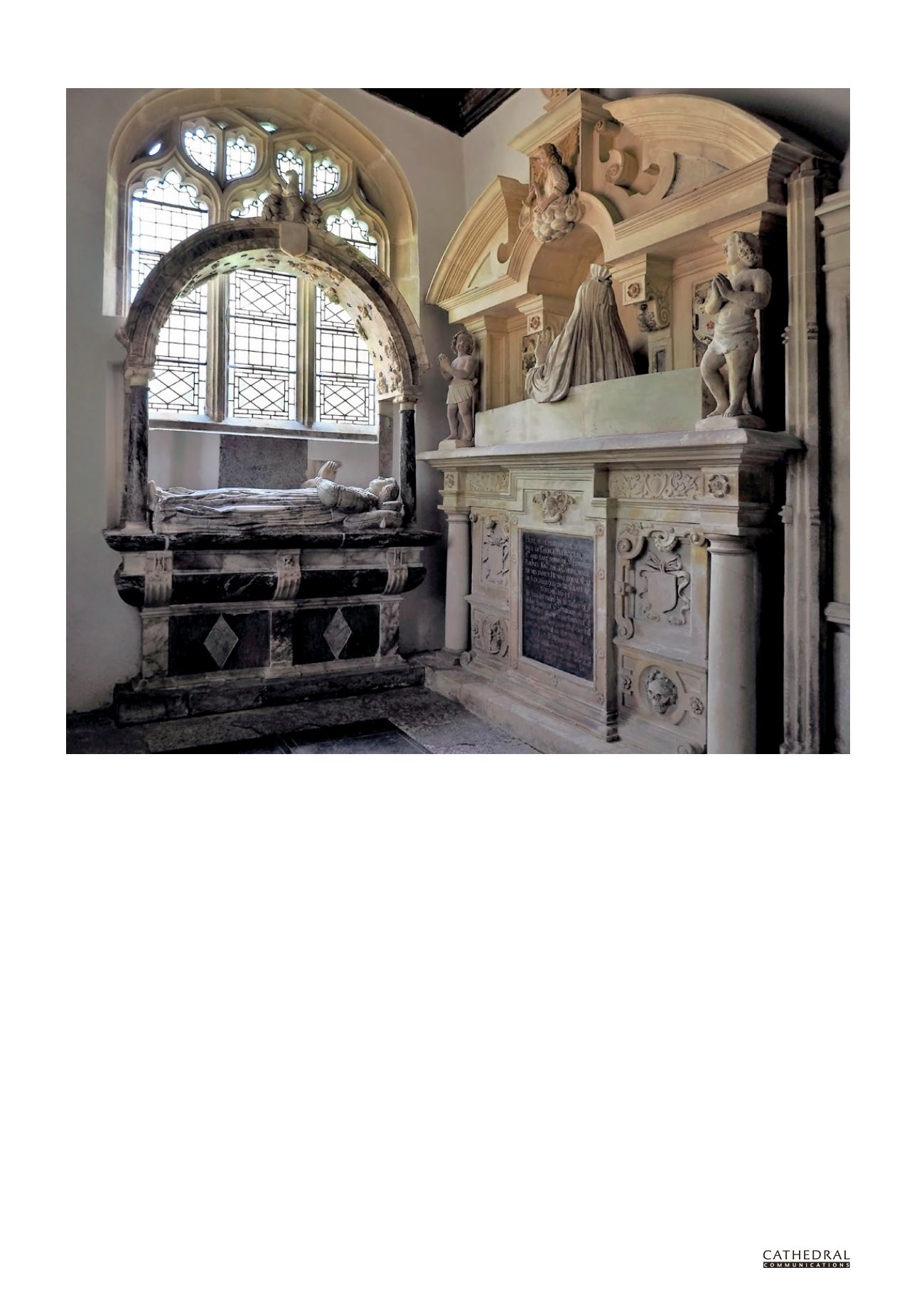

16
BCD SPECIAL REPORT ON
HISTORIC CHURCHES
24
TH ANNUAL EDITION
chapel. Beginning in June 2016 moisture
readings were taken twice a week from
30 locations in the chapel alongside a
record of the weather conditions and
rainfall. After the first few weeks it
became apparent that excessive levels
of moisture were being retained in the
fabric of the Rodney Chapel including
the internal walls and at high level.
In some areas there was a delayed
response in relation to the rainfall.
In discussion with Mark Taylor
of architects Beech Tyldesley, the
conservators looked more closely at
the drainage, foundations and soil
levels surrounding the Rodney Chapel.
Inspection holes were made to all
elevations with investigations at the east
end revealing a 1970s drainage system
with a brick soakaway. This was found to
be too close to the chapel and at a higher
level than the floor.
It was felt that the soakaway could
be contributing to the high levels of
moisture throughout the fabric of the
chapel and a temporary diversion to the
rainwater goods was set up on the east
elevation to take the water from the
downpipe to the drain at the far south
corner. The intention was to allow the
soakaway to dry out while continuing
to monitor the levels of moisture in the
chapel for a minimum of 12 months.
Recent readings after an extended
dry spell showed an overall reduction
in moisture levels but with high levels
still present across the interior wall
between the chancel and chapel where
the monument to Sir Thomas Rodney is
located. The next stage is to take readings
after a period of heavy rainfall. The
surrounding environment at St Leonard’s
is further complicated by the presence of
underground water courses running off
the Mendip Hills.
Tests pits were also dug to assess
the possibility of installing a French
drain. However, the test pit which was
dug against the west wall of the chapel
revealed that there were no foundations
between the original church buttress
and the later buttress to the chapel,
and there was only soil under the Lias
limestone slabs to the plinth. Unlike
the chancel, where the floor level
was raised during the 19th-century
restorations, the chapel is built off the
ground with minimal foundations. In this
case the porous fabric of the envelope
and the monuments will continually
draw moisture up from ground level.
This underlined the importance of
ensuring that the external and internal
structure had to manage and distribute
moisture as efficiently as possible.
Further investigations were carried
out between the north porch and the
west end of the chapel to find the
location and direction of two drains and
to determine whether there were any
breakages. Both drains were found to be
in good order with no cracks or leaks.
The south east corner of the Rodney Chapel after conservation showing the monuments to (right) Anne Lake (d1630) and Sir George Rodney (d1651)


















